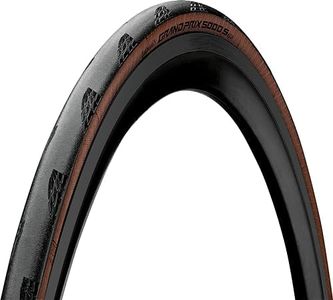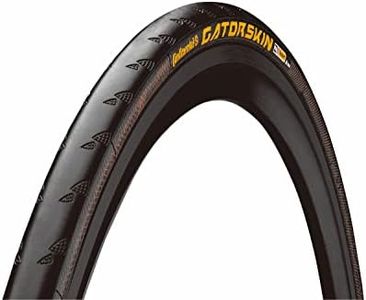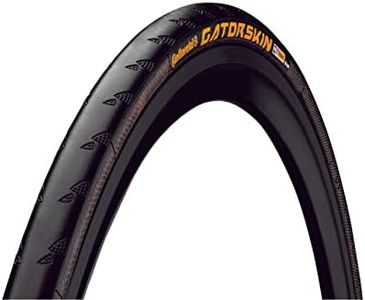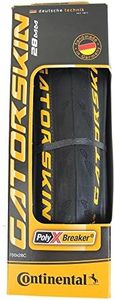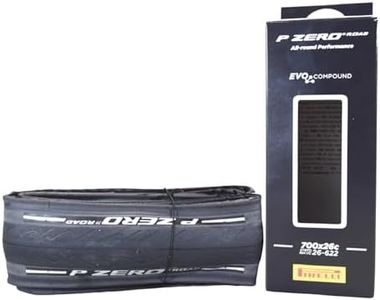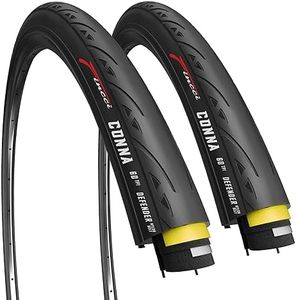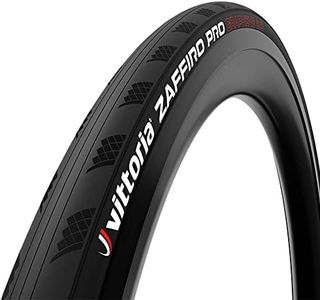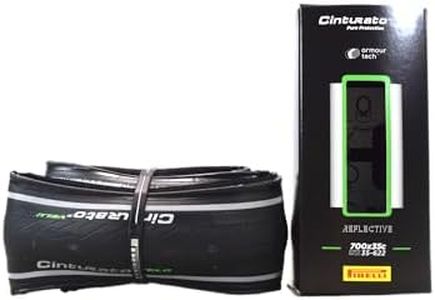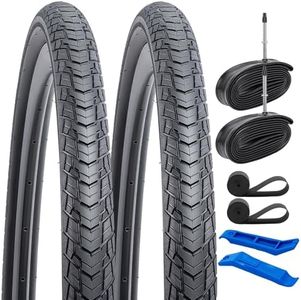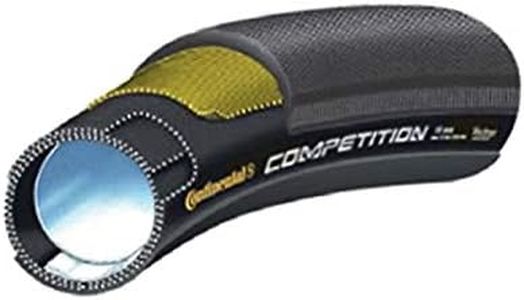We Use CookiesWe use cookies to enhance the security, performance,
functionality and for analytical and promotional activities. By continuing to browse this site you
are agreeing to our privacy policy
10 Best Road Bike Tires For Puncture Resistance
From leading brands and best sellers available on the web.Buying Guide for the Best Road Bike Tires For Puncture Resistance
Choosing road bike tires that prioritize puncture resistance can save a lot of hassle, especially if you ride often, commute, or go long distances. The right tire not only reduces the chances of flats but also impacts your comfort, speed, and overall biking experience. To find the best fit, it's important to consider several key specifications beyond just the promise of puncture resistance, as different tires offer trade-offs in weight, rolling speed, and grip. Think about your usual riding environment—city streets, rough roads, or occasional trails—to match your tire to your needs.Tire Material and ConstructionTire construction refers to what the tire is made of and how it’s put together; common materials include rubber compounds with added layers like Kevlar or other anti-puncture belts. Tires with additional protective layers are generally better at resisting sharp objects, but can feel a bit heavier and less flexible. Entry-level options might only have basic rubber while more robust versions add one or more protective belts inside the tire. If you often ride on debris-strewn roads, go for something with extra layers, while those who stick to well-kept streets may prefer lighter construction for better performance.
Tread ThicknessTread thickness is simply how much rubber there is between you and the road. Thicker treads usually mean a tougher barrier against punctures, but they tend to add weight and can affect how the tire feels when riding. Thin-tread tires are lighter and often faster, ideal for racing or smooth surfaces, but are more likely to get punctured. If puncture resistance is your main goal, look for moderate to thick treads, striking a balance between protection and ride quality.
Tire WidthTire width describes how wide the tire is when properly mounted and inflated. Narrow tires (23-25mm) are common for racing and offer less rolling resistance but less protection. Wider tires (28-32mm or more) can absorb shocks and spread out the force of an impact, reducing the chance of a puncture. If you commute, ride on mixed roads, or just want extra comfort and protection, consider a wider tire; if you're focused on speed and your routes are clean, a narrower tire could still be suitable.
Puncture Protection LayerThis is an extra section within the tire, usually under the tread, made from materials designed specifically to stop sharp objects from reaching the inner tube. Common types include Kevlar or other branded anti-puncture strips. Some tires have one layer, others have two or more. The more layers, the more protection you'll get, but sometimes at the expense of weight and ride feel. Decide how often you encounter sharp debris or rough surfaces when picking the level of protection you want.
TPI (Threads per Inch)TPI measures how many threads are woven together in the tire's casing. Higher TPI means a smoother, more supple ride and tends to be lighter, but lower TPI often results in tougher, thicker casings that resist punctures better. Tires with a TPI in the lower range (like 30-60) are more durable, while those with high TPI (like 120 and above) prioritize performance. If puncture resistance is your main concern, look toward the lower to mid-range TPI options.
